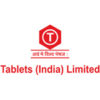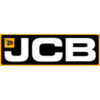TEST REPORT
This is the test and calibration report, as done at our factory, by our calibration & QA team.
-
Serial Number 6.11 1056
-
Done By: Papu
-
Date: 10/11/16
GUARANTEE CERTIFICATE
We certify that the instrument mentioned above has been tested by us and is guaranteed for a period of 12 months from the date of dispatch. We undertake to make good by replacement or repair defects arising due to faulty design, material Or workmanship within the above mentioned period. Provided that the part in respect to which the complaint is made, is sent at the purchaser’s expense.
The warranty is valid subject to:
- The meter or part there of not being subject to alteration, accidents or misuse.
- The installation having been done as per our guidelines in the manual
Aster Technologies
Authorized Signatory
FEATURES:
- Integral SS needle valve for pressure control
- Quick release coupling making multipoint sampling convenient
- Automatic air release valve transparent body
- 500 ml beaker for sampling
OPERATING PROCEDURE:
- Connect inlet of SDI kit between micron filter and high pressure pump
- Run the plant at service flow using raw water pump only
- Close the needle valve of the SDI kit completely
- Using reject valve of the membrane set the pressure to 2kg/cm³
- Put filter paper into SDI kit
- Open the needle valve of the SDI kit
- Fine adjust the reject valve of the membrane to maintain 2kg/cm² pressure in the SDI kit pressure gauge
- Place the 500ml beaker under the SDI kit outlet
- Note time (Tsec) for filling 500 ml empty beaker
- Let the water pass through the same filter paper for the next 15 minutes
- Now place the empty beaker under the SDI kit again and note time (T15 sec) for filling 500 ml empty beaker
- Calculate SDI (Silt Density Index) using the following formula:
- SDI = (T15 sec – Tsec) * 100 / 15
INSTRUCTIONS FOR FILTER PAPER:
- Handle filter paper with care. Hold it only by the edges as any particle or wrinkle can result in erroneous reading.
CONNECTION:
- Inlet – 1/4″ Female threaded needle valve
- 1/4″ Female pressure gauge (0-4.2 kg/cm²)
PRESSURE:
- Test Pressure: -3.0 Kg/cm2
- Operating Pressure -2.0 Kg/m2
INSTALLATION:
- Provide a BSPM threaded nozzle at the location where the SDI has to be measured.
- Screw the needle valve to the nozzle.
- Connect the kot at the quick release coupling. The installation is now complete
- Disconnect the kill and keep it in the box.
List of Parts
- U Pin
- 1/4″ SS needle valve
- Quick release elbow
- Quick release socket
- Rubber grommet
- Top cover
- 1/4″ BSPF threaded adaptor
- Pressure gauge 0-4.2kg/cm2 ” BSPM threaded
- 77mm dia x 3mm O-ring
- Air release cone
- Air release cap
- Sdi kit body (Polycarbonate)
- 40 mmdia x 5mm O-ring
- Cellulose filter paper 0.45micron
- Filter support disc
- Disk holder
- 500 ml beaker
Technical Specifications
- Material: Polycarbonate/ABS
- Sealing: Silicone O-rings
- Filter paper: 47mm dia 0.45 Micron
- Filtration area: 12.5 cm³
- Capacity: 250 ml Housing
- 500 ml Beaker
- Pressure gauge range: 0-4.2 kg/cm²
SLIT DENSITY INDEX (SDI) TEST KIT
USER GUIDE
What is SDI?
The Silt Density Index (SDI) test is a means of quantifying the amount of particulate contamination in a water source. The test was specifically developed as means of predicting the rate of colloidal and particulate fouling of Reverse Osmosis (RO) membranes.
Description of the silt density index test
The silt density index test is performed using a .45 micron, 47mm diameter filter. The water to be tested is
supplied to the filter at a constant pressure of 30 psi. The test involves measuring the time it takes to collect a 500 ml sample through the filter at the start of the test and comparing it with the time it takes to collect a 500ml sample after water has flowed through the filter (at 30psi) for 15 minutes. The sample times are applied
to the formula below to obtain the SDI15 value This procedure is based on the Standard Test Method for Silt Density Index (SDI) of Water. ASTM procedure D4189-95
Reference sheet for calculated SDI
The sheet shows common measurements for quick reference. For reliable results, at least two measurements must have similar SDI values (+/- 0,5).
Example:
SDI1 = 3, SDI2 = 3,5: The measurement is acceptable
SDI1 = 3, SDI2 = 3,7: The measurement is NOT acceptable
SDI = 0-3: Standard conditions apply.
SDI = 3-5: Special operating data for recovery and permeate flow apply as stated in plant instructions.
SDI = 5-6: The water is not suitable
for feeding an NF or RO plant unless
the colloidal content is reduced
by supplementary pre-treatment, i.e.
flocculation.
Manual Silt Density Index (SDI) Test
Kit
AONE’S high performance manual silt density index (SDI) test kit has been specially developed for engineers, water treatment professionals; and building services and facilities management specialists with responsibility for the maintenance and management of reverse osmosis water purification systems.
AONE’s professional SDI test kit will allow reverse osmosis plant engineers and water treatment professionals to perform quick and accurate in-field testing and analysis procedures for a range of important RO system parameters. Depleting supplies of fresh water, ground water contamination and the rising cost of water have compelled industries to increasingly turn to the desalination of brackish/sea water as well as water recovered from treated industrial effluent and secondary treated municipal sewage.
All these recycled water systems use reverse osmosis (RO) system for removal of dissolved solids. The presence offinely divided particles in feed water to an RO system can cause serious problems as they are too small to be retained by conventional pre-treatment systems and they find their
way to the RO membrane.
The function of an RO membrane is to concentrate dissolved solids on one side of the membrane and allow water molecules to permeate through the other side. Suspended, colloidal particles are larger than dissolved solids and are also rejected by the membrane. These fine un-dissolved
suspended particles tend to settle on the surface and, in the process, foul the membrane. The net result is an increase in feed pressure; reduced flow and high conductivity of permeate. Spiral wound and hollow fine fibre membranes are the most vulnerable and once fouled, cleaning of the element is often difficult.
Use of SDI Kit
Silt Density Index (SDI) is an empirical test developed for measuring the rate of fouling of Nano-filtration (NF) or RO membranes.
Suspended solids and colloidal materials in feed water are one of the biggest problems in reverse osmosis systems. Although most systems have some pre-treatment, including 5-micron pre-filters, these fine particles are responsible for the fouling of reverse osmosis membranes.
In order to measure the degree of this fouling problem, a concept called Silt Density Index is used. Here filtration rates are calculated by exposing a 0.45-micron filter to the feed water under pressure.
An SDI of less than 5 is typically considered acceptable for the reverse osmosis systems. This means membranes should foul at a very low rate at SDI values of less than 5. Although this concept works most of the time, there are exceptions when a lower SDI (less than 3) is desirable due to the nature of the suspended solids in the feed water.
Filter Paper Coloration after the SDI Test
1. Slightly yellow- possible problem could be presence of iron and/or organics in feed water. Check the source.
2. Reddish brown – positive indication of presence of iron in feed water. Take corrective steps for removal of iron.
3. Grey- indicates presence of carbon fines. Check the carbon filter, remove carbon fines.
4. Particles present – check the cartridge filter and the filter elements. the filter paper
5. Dark Black – If the color dissolves in the acid, it indicates the presence of manganese in the water.
Silt Density Index Kit Contents
Instruction Booklet
47mm Filter Holder
0.45 47mm Filter Papers (100Pk)
500ml Graduated Cylinder
Stop Watch
Dull Tweezers
SDI Assembly Regulator
How do the membranes from different manufacturers compare?
For many users, the Millipore membrane has been the “standard” membrane for silt density index testing. If you Google silt density index you’ll even find a reference or two that actually states that the test is to be performed with a Millipore membrane. Since the characteristics of the membrane has a profound effect on the results, we prepared a comparison of the leading membranes.
Limited Warranty
What the warranty covers:
Controls warrants the manual SDI test kit to be free from defects in materials and workmanship during the warranty period. If a product proves to be defective during the warranty period will at Aone is sole option repair or replace the product with a like product. Replacement product or parts may include remanufactured or refurbished parts or components.
How long the warranty is effective:
The manual SDI test kit is warranted for one (1) year for parts and labor from the date of the first consumer purchase or 15 months from ship date, whichever comes first.
What the warranty does not cover:
1. Damage, deterioration or malfunction resulting from:
a. Accident misuse, neglect, fire, water, lightning or other acts of nature, unauthorized product modification or failure to follow instructions supplied with the product.
b. Repair or attempted repair by anyone not authorized by A-one
c. Any damage of the product due to shipment.
d. Causes external to the product such as electric power fluctuations.
e. Use of supplies or parts not meeting A-one’s specifications.
f. Normal wear and tear.
g. Any other cause which does not relate to a product defect.
2. Transportation costs necessary to obtain service under this warranty.
3. Labor other than factory labor.
How to get service:
1. To obtain warranty service, contact A-one for a Return Material Authorization (RMA).
2. You will be required to provide:
a. The serial number of your meter
b. Your name and address
c. A description of the problem
3. Package the meter carefully for shipment and return the meter to A-one, freight prepaid.
Limitation of implied warranties:
There are no warranties, expressed or implied, which extend beyond the description contained herein including the implied warranty of merchantability and fitness for a particular purpose.
Exclusion of damages:
A-one’s liability is limited to the cost of repair or replacement of the product. A-one shall not be liable for:
1. Damage to other property caused by any defects in the product, damages based upon inconvenience, loss of use of the product, loss of time, loss of profits, loss of business opportunity, loss of goodwill, interference with business relationships or other commercial loss, even if advised of the possibility or such damages.
2. Any other damages, whether incidental, consequential or otherwise.
3. Any claim against the customer by any other party.
Effect of state law:
This warranty gives you specific legal rights, and you may also have other rights which vary from state to state. Some states do not allow limitations on implied warranties and/or do not allow the exclusion of incidental or consequential damages, so the above limitations and exclusions may not apply to you.
Procedure
1)Open kit and check that all items are present:
Tubing for Feed
Graduated Cylinder
Filter Holder (with tubing connected)
Tweezers
Thermometer
Sample SDI Membrane Filters
2) Connect the tubing to the feed port labeled “IN” by inserting the tubing into the fitting and pushing to the pipe-stop. Pull lightly on the tubing to check that it is secure. (To remove the tubing when you are done testing: Push in the collet against the face of the fitting. With the collet held in this position the
tube can be removed.)
3)Connect the elbow at the end of tubing attached to the filter holder by inserting the stem into the outlet labeled “OUT” and pushing to the pipe stop. Pull lightly on the elbow to check that it is secure. (To remove the elbow when you are done testing: Push in the collet against the face of the outlet fitting. With the collet held in this position the elbow can be removed.) Once all connections are made, direct the outlet from the (empty) filter holder to drain. Turn the feed water on by turning the control valve handle counter-clockwise to the open position. Allow the system to run for approximately 15 seconds to flush and purge the air from the system. Return the valve to the closed position by twisting the handle clockwise. Open the filter holder by twisting the cap and place the membrane filter into the holder. The filter disk goes below the o-ring lying flat against the perforated screen. Use the tweezers to handle the membrane filter – do not touch this with your hands. Note that the filters are packaged with blue separator sheets between them – these should be discarded.
Testing and Calculation
1. Verify that filter is installed and the output from the filter holder is directed to the 500 ml container.
2. Open the inlet ball valve and as quickly as possible adjust the pressure to 30psi. (Turning the knob on the pressure regulator clockwise increases the pressure, turning it counter-clockwise reduces the Pressure.) As soon as the pressure reaches 30psi, begin timing. T0 is the time it takes to fill the 500 ml Container starting when the valve is first opened.
3. Let the water run through the filter at the constant pressure of 30 psi (adjusting pressure regulator if Necessary) for 15 minutes. Take another reading for the time it takes to fill the 500 ml container. This is T15.
4. After the time to fill the 500 ml container starting at 15 minutes (T15) is recorded, the test may be Discontinued.
5. Using the values of T and T , calculate the value of SDI from the formula below. This is called the 015 Standard SDI, and is referred to as SDI15.
6. It is possible that the filter may get completely plugged or it may take too long to collect the 500 ml Sample after 15 minutes. In that case, starting with a new filter, repeat the process at 5 minutes, Instead of 15 minutes. The SDI calculated using this information is called SDI5. If possible, starting with a New filter, you may also determine SDI10 (at 10 minutes).
7. The formula for calculating the Silt Density Index is as follows:
S.D.I. = [(1-T /T ) × 100] ÷ t 0t
Small t = the time elapsed between the first timed test and the second timed test, and is usually 15 Minutes as stated in 3 above unless plugging occurs and a shorter interval is needed as in step 6. typical calculation (using 15 minutes) is as follows:
A
S.D.I. = [(1-30/90) × 100] ÷ 15 = 4.4
Where T0 = 30 seconds, T15 = 90 seconds, and t = 15 minutes.
8. The test may be repeated (using a new filter each time) at the same interval, and an average of the SDI readings may be used for analysis.
































